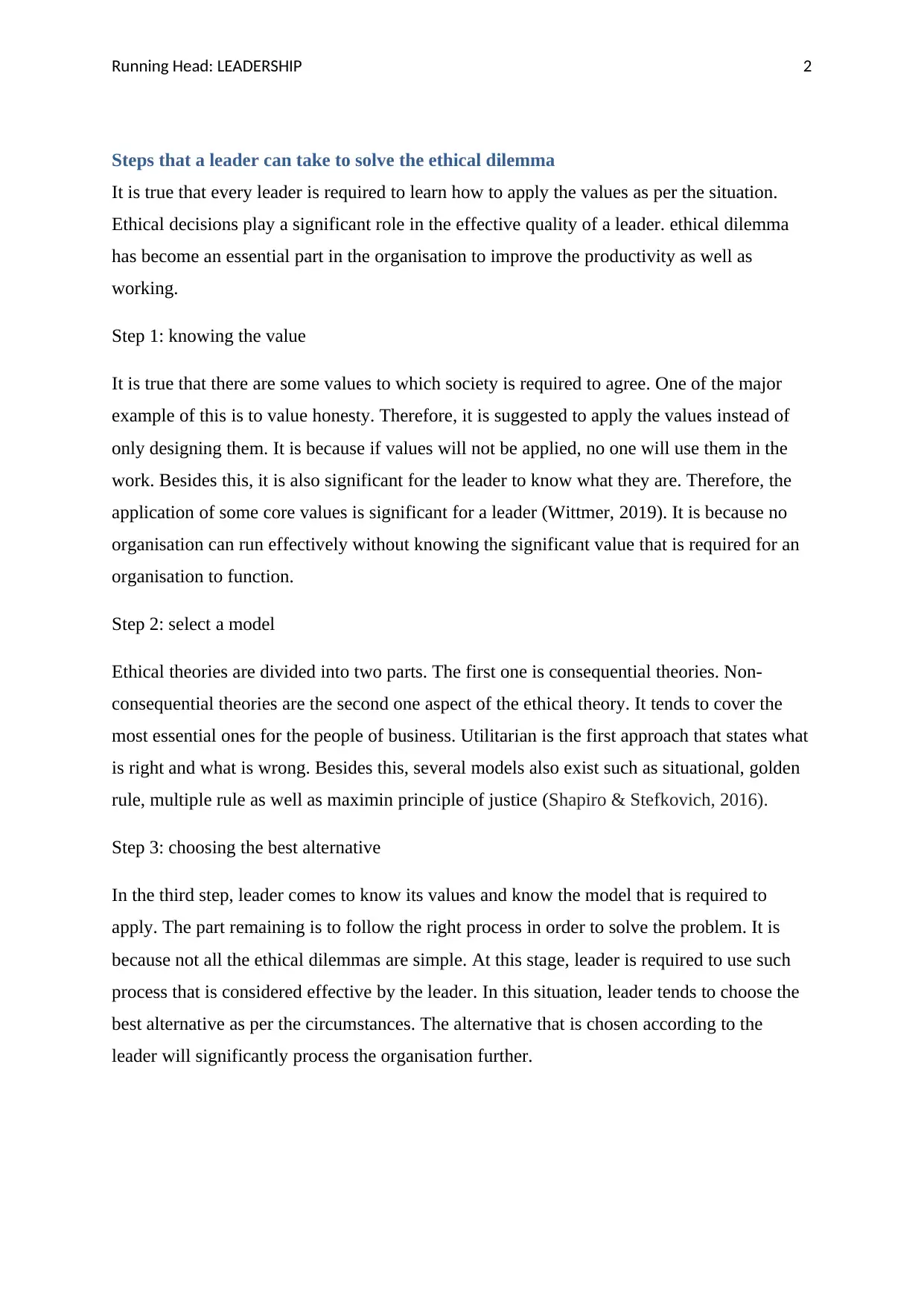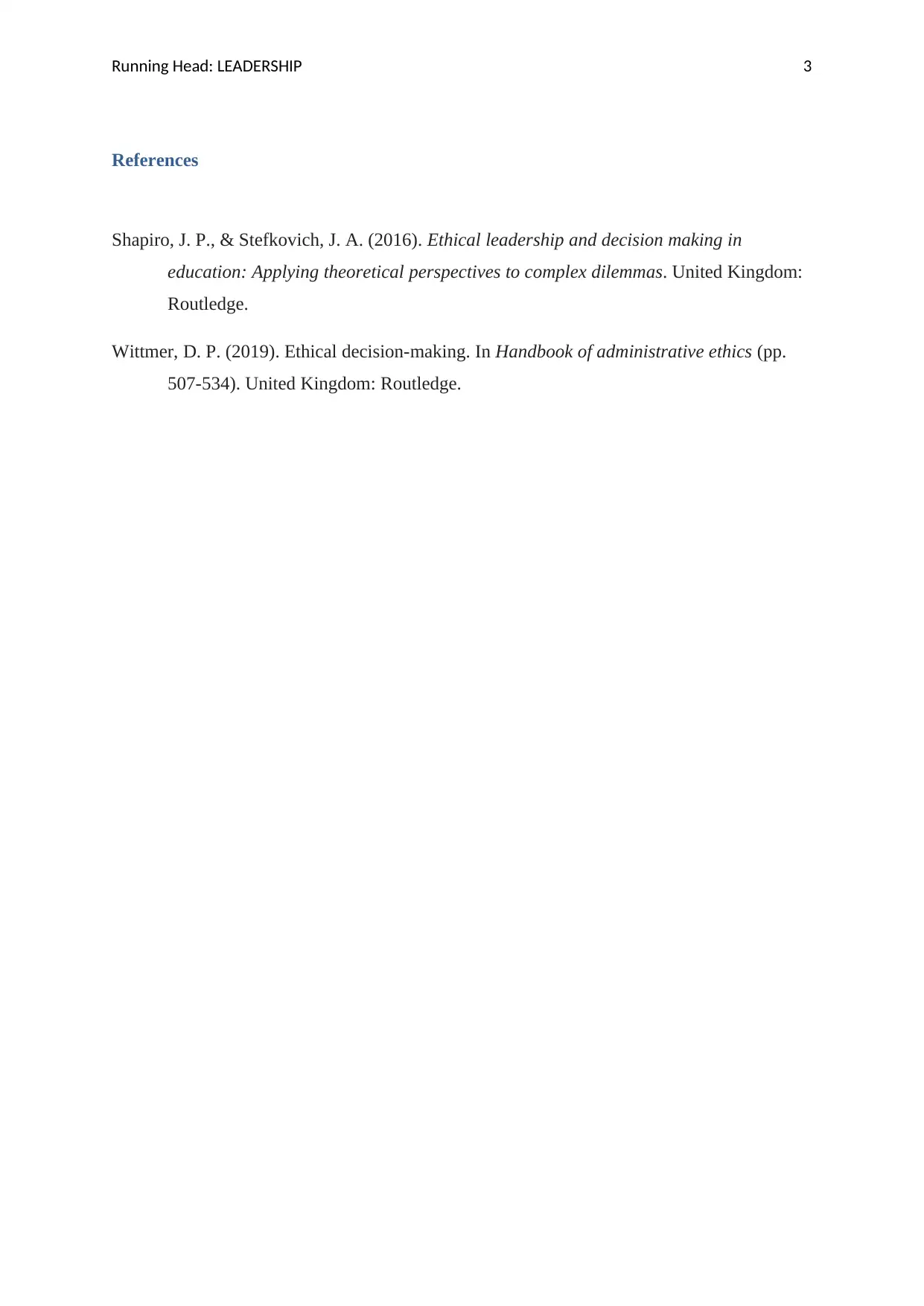MGT3003 Managing Change: Addressing Ethical Issues in Leadership
VerifiedAdded on 2023/03/30
|3
|402
|493
Discussion Board Post
AI Summary
This assignment discusses the steps a leader can take to solve ethical dilemmas in the context of managing change within an organization. It emphasizes the importance of understanding and applying core values, selecting an appropriate ethical model (such as consequential or non-consequential theories like utilitarianism), and choosing the best alternative based on the specific circumstances. The discussion highlights the leader's role in addressing ethical considerations related to employees, disruption, communication, and teamwork during periods of organizational transformation, particularly in situations involving acquisitions and restructuring. The importance of creating trust and cultivating cultural values is also emphasized. Desklib provides access to this and other solved assignments to aid students in their studies.
1 out of 3










![[object Object]](/_next/static/media/star-bottom.7253800d.svg)